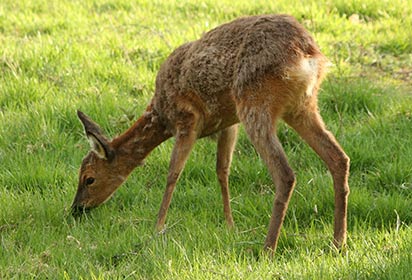Written by Gemma Hall
Ospreys, goshawks and tawny owls breed successfully at Kielder because of the remoteness of the forest and the protection from persecution afforded by the Forestry Commission. There’s an organised osprey viewing station at Leaplish but to see one fishing try Bakethin Reservoir at the north end of Kielder Reservoir.
A large extent of Kielder is open moorland dominated by heather and sphagnum mosses and inhabited by waders and grouse. Dragonflies and damselflies are easily spotted hovering over damp ground where you may also see cranberry, bog asphodel, sundew and bog rosemary. One of the most accessible moorland wildlife habitats at Kielder is behind Tower Knowe. From the road, a trail climbs to the lake at Falstone Moss Nature Reserve.
In the conifer-dominated forests, look out for crossbills perched on the uppermost branches of trees, roe deer and red squirrels. At Kielder, our native squirrel has the upper hand over greys, making this their last stronghold (60% of the red squirrel population in England). They are not infrequently seen around the Kielder Castle entrance to Forest Drive and at Leaplish where there are hides. Chewed pine cones on footpaths are a sign that squirrels are about.
The Forestry Commission rangers and wildlife experts lead a number of wildlife watching trips throughout the year, including dawn deer safaris, owl hunts, fungi forays, goshawk walks and badger watching (01434 250209).
Hoping to find out more about Northumberland? Why not take a look at our comprehensive travel guide:

